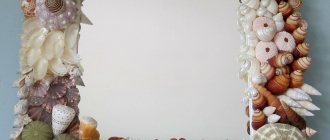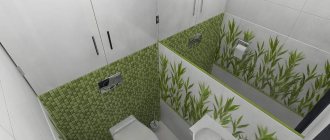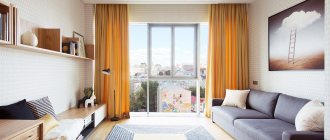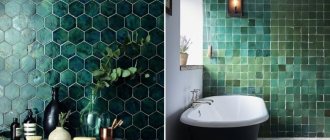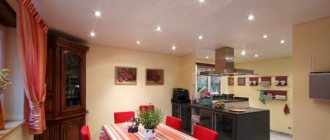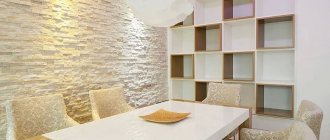Photo: kraski-net.ru Wallpaper has long been turning into a relic of the past, because it is being replaced by much more modern and practical materials. Today we will tell you about decorative plaster, its types, composition and how to apply textured material. Your walls will be smooth, textured and certainly unique!
Pros and cons of interior decoration
Several advantages and disadvantages of this finish.
| pros | Minuses |
| It has an aesthetically attractive appearance and high performance characteristics. | Does not tolerate serious mechanical stress. |
| Goes well with other finishing materials. | |
| Resistant to temperature changes, sunlight and other negative factors. | It has a fairly high price. |
| Perfectly hides unevenness and defects present on the surface. | Some types of coating are not easy to maintain. |
| Has a long service life. | |
| Eco-friendly and vapor permeable. | Decoration requires a large consumption of this material. |
| It has many colors and textures and a huge variety of application methods. |
Silicate-based coatings
This coating is used for finishing exclusively external walls and surfaces, due to the presence of “liquid” glass and a number of other harmful impurities in the composition.
Silicate coatings can be found on sale in finished form. But it should be remembered that the applied coating dries very quickly, and therefore it is necessary to work with the proper amount of skill.
Types of decorative plaster for interior decoration
There are several main types.
Venetian
see also
Photo of Venetian plaster
Venetian has a very beautiful complex shade and perfectly imitates noble natural stones. Thanks to such genuine depth and uniqueness of the pattern, the decor takes on a solemn and amazing appearance.
Structural
It contains solid particles that create a clear pattern and give the plane depth, volume and roughness. The structure and severity of the pattern depends on the size of the particles in the composition.
Textured
With the help of such a decorative coating, various imitations of textures are created, for example, it can be natural stone, thin-layer sand concrete, porcelain stoneware or sawn wood.
The photo shows decorative textured plaster on the walls in the interior of a modern kitchen.
Acrylic-based compositions
All acrylic types of plaster include a number of natural and synthetic polymers in their basic composition. The presence of polymer resins gives the coating proper elasticity, resistance to shrinkage and the formation of cracks in the finished coating.
Note!
- Laying quartz vinyl tiles with your own hands step by step: instructions, subtleties, methods, features, installation, “Click-Drop”
Suspended ceiling Armstrong (125 photos): device, plate sizes, types, installation, calculation and installation
- Textured paint for walls: types, how to apply it yourself, instructions, composition, varieties, photos of new designs
Another advantage is the huge variety of colors of decorative plaster, obtained by adding coloring pigments.
However, when purchasing acrylic materials, you should be aware of the high risk of fire of the composition.
Application options
Two ways to use decorative material.
Walls
With the help of such wall decoration, you can give the room special originality and uniqueness, as well as bring any design ideas to life.
Ceiling
This material has excellent plasticity, so with its help you can not only effectively decorate the ceiling or create various reliefs on it, but also hide cracks and minor irregularities in the ceiling plane.
The photo shows a classic bedroom with a ceiling decorated with sand-colored plaster.
Thanks to the ability to create any shape and color on the ceiling, such a coating will look beautiful and harmonious in any interior.
Finishing of stoves and fireplaces
Decorative plaster for decorating stoves or fireplaces must first of all be resistant to high temperatures, heating, rapid cooling and have protective properties.
Kitchen apron
Exceptionally durable, heat-resistant and odor-resistant plaster is a rational option for decorating a kitchen backsplash and creating a stylish and individual design.
Arch
With the help of this magnificent decorative material, which has countless options and is suitable for almost any style direction, it is possible to creatively approach the design of such an architectural element as an arch and turn it into a truly unique interior masterpiece.
Adviсe
- For beginners, it is better to use easy-to-apply mixtures, and create the relief with special stencil rollers that are rolled in a certain direction.
- “Bark beetle” is made with special granules, moved with a spatula.
- You can sculpt flowers, bas-reliefs and other three-dimensional decor from gypsum mixtures. But they set quickly, so the mixtures are kneaded a little and worked quickly.
- If you have no prior experience, it is better to work with the rough version on a small surface, for example, on the end wall of a balcony or in a toilet. But a silicone mixture is more suitable here, although it is considered relatively expensive.
Decorative plaster can be used to create completely different patterns
White decorative plaster looks very cool
See alsoFeatures of surface finishing with artificial stone, photo.
What colors are there?
The color scheme for the room is a very important point in the design of the apartment.
White
Snow-white plaster allows you not only to create a very elegant and graceful decor, but also to give the space additional volume, spaciousness, lightness and weightlessness.
The photo shows the walls in the hallway decorated with white plaster.
Grey
A deep and attractively beautiful gray shade gives the room the right interior background and forms a discreet, inconspicuous, smoky and multifaceted design.
Black
It is a classic and extremely strong color that, when used correctly, can give a room a sophisticated and modern look and turn it into a comfortable, elegantly decorated space.
Red
The spectacular red finish creates an original and daring design that always looks impressive and attracts all attention.
Green
The many faces of green can come in many shades, such as new foliage, dark pine needles, mint ice cream, fresh greens or jewel. Each of them carries a certain palette of emotions and impressions, and in its own way affects the image of the room.
Violet
This color looks prestigious and elegant. Purple is able to fill an ordinary interior with special elegance and luxury.
The photo shows a bedroom with walls decorated with purple decorative coating.
Beige
Calm and neutral beige is a permanent classic in interior design. With the help of this color it is possible to bring a special style and harmony into the environment.
Brown
Noble and expensive brown shades, such as terracotta, cinnamon, bourbon or copper, have a natural and very deep appearance, due to which the space is filled with warmth and coziness.
Yellow
It evokes associations with the sun, adding joy and special energy to the atmosphere. Decorative yellow plaster is considered a rather original and modern decoration option.
The photo shows a children's room with decorative yellow plaster on the wall.
Blue
Depending on the intensity of the shade, blue can create a luxurious, intriguing and relaxing atmosphere in a room and set a certain mood for it.
Gold
Thanks to the extraordinary attraction, external gloss and internal warmth emanating from the golden hue, it allows you to warm up and significantly transform the space.
The photo shows a classic bathroom with golden-colored plaster on the walls.
Silver
The slightly iridescent and shimmering silver color is a very effective, bright and unusual design option when creating a truly original design.
Photos of design and effects of decorative plaster
Due to certain design and effects, you can create a unique interior and add luxury, style and good taste to it.
Under the stone
Thanks to the imitation of a surface made of stone, the room takes on a more noble and monumental appearance and becomes much more comfortable and functional.
The photo shows a living room and walls with a decorative coating that imitates stonework.
Under the tree
Decorative design that reproduces natural material, in the form of tree bark, boards, cross-cuts or other wood patterns, has a natural appearance and is practically no different from real wood.
Fabric imitation (velvet, silk)
This imitation of fabric texture looks absolutely exclusive and allows you to create an elegant, deep, unique design filled with comfort and warmth.
Under the skin
Decorative finishing with the effect of reptile skin, for example, snake, crocodile or other leather imitations, is a rather atypical and slightly extravagant interior solution. This design has a unique and exotic look, which allows you to create a very elegant and sophisticated environment in the room.
Pearl
With the help of subtle pearl shine and gentle tints, it is possible to create brilliant glossy accents in the room and give it solemnity and a little mystery.
World map (islands)
A geographical image with clearly marked continents, islands and other characteristic relief will be a wonderful decoration for almost any room.
Two-color
White-gray, black-white, beige-brown coating or plaster with a combination of other color pigments, such as pink and gray, blue and white and others, allows you to achieve the desired effect in the space and give it a special uniqueness.
Antique
Despite the rough, slightly shabby appearance, which is created using a special technique for applying patina, such decorative finishing in the interior looks very dignified, allows you to recreate the atmosphere of the past and give completeness and completeness to certain style directions.
Combination with decorative stone
It is considered a very good and successful combination, characterized by strength, durability and noble appearance.
Drawings and patterns with plaster
The most popular types of designs or patterns.
Paintings and frescoes
This artistic design adds a special flavor to the room, allows you to dilute the interior and add your own individuality and some zest to it.
Flowers and leaves
Floral designs, in the form of roses, lilies, orchids and other plants, made with decorative plaster, thanks to volumetric shapes and lines, form sophisticated patterns and bring notes of magic to the space.
Wave
Due to smooth natural and free wavy lines, it is possible not only to make the atmosphere more harmonious, but also to smooth out spatial imperfections and highlight the necessary features of the interior.
Circles
Round elements are quite relevant in decorating a room, as they allow you to create a serene, playful atmosphere and place interesting accents.
Stripes
With the help of this design technique, it is possible not only to give the design a certain rigor and proportionality, but also to change or adjust spatial perception.
Ideas in different styles
Photos of decorative plaster decoration in the most popular styles.
Loft
To finish this style, decorative coatings with a rust effect or materials that imitate concrete or metal are used. Thanks to their original appearance, they will perfectly emphasize the stylistic direction of the loft.
The photo shows a small loft-style bedroom with gray plaster on the wall.
Classic
Classic style involves a neat, symmetrical and proportional design. Decorative plaster in light colors that are as close as possible to natural colors, an elegant smooth silk covering or picturesque panels, frescoes or bas-reliefs with gilding would be appropriate here.
High tech
This geometric techno design is especially harmonious, emphasized by gray, sand, beige finishes or coatings imitating concrete, cement or travertine.
Minimalism
Laconic, monochrome minimalism is distinguished by natural, rough textures or finishing materials that imitate wood, concrete, brick, suede or metal. This decoration looks very impressive and maximally emphasizes the exclusivity of this interior trend.
The photo shows decorative dark gray plaster on the wall in a minimalist bedroom.
What are the walls used for plastering?
The brick wall is treated with cement-based solutions, sometimes with the addition of lime. If the layer thickness is more than 20 millimeters, you should use a mesh for plastering the walls to avoid collapse.
To obtain a solution, a mixture of cement and sand in a ratio of 1:3-5 is gradually poured with water until the consistency of the dough is achieved. For limestone mortar, add 7 parts sand and 3 parts milk of lime to 1 part cement.
Proper plastering of interior walls made of facing bricks is very energy-intensive and requires special equipment, so it is better to leave this type of finishing in the hands of professionals.
A smooth concrete wall is treated with a solution of lime and gypsum in a 4:1 ratio. Pour gypsum into the water in a thin layer and knead until a not very thick mixture is formed.
Then lime and quartz particles are added.
An uneven concrete wall does not need the addition of quartz and can be plastered with either cement or gypsum mortar.
Foam concrete walls should first be treated with a primer, and then they can be plastered with gypsum solutions.
Choosing the right plaster is very important, so it is always better to consult a professional in this matter. An experienced seller can advise you on the most suitable option from those described above or offer to purchase a ready-made mixture.

